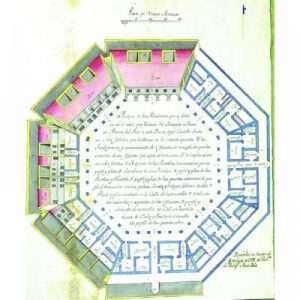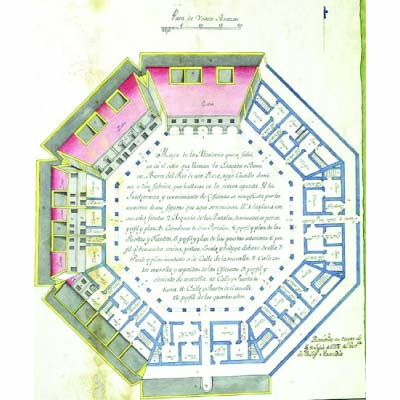
In 1752, the Spanish monarch issued a royal decree mandating the Governor General Pedro Manuel de Arandia y Santisteban to construct warehouses within the cannon firing range of Manila. It was more than just a place to store goods – it was a place where Chinese traders could stay and sell their goods. The site chosen by the authorities was on the opposite side of Fort Santiago on Calle San Fernando. This was how it came to be known as the Royal Alcaiceria de San Fernando.
The word Alcaiceria is loosely translated from the term “silk market,” but it functions more like a custom house where tax payments were made in silk cloths. Since this was the only place transient Chinese traders were allowed to stay and do business, it became a way for the Spanish authorities to control and monitor their movements.
The design of the Alcaiceria was credited to Fray Lucas de Jesus Maria, who came up with a two-story octagonal building. The lower floors were meant to be shop spaces, while the upper floors served as lodgings. The construction of the market was done under the supervision of Antonio Mazu, a Catholic Chinese. Competition among the Spaniards themselves led to the opening of another Alcaiceria within the Walled City in 1783, and the Chinese traders began moving their businesses there. The Alcaiceria de San Fernando in turn focused on traders other than the Chinese.
The Alcaiceria de San Fernando lost its prominent position when a new custom house was opened inside Intramuros in the 1800s. Adding further to its decline was the military: it wanted the Alcaiceria in San Fernando removed as invaders could use to it to lay siege to the Walled City. The Alcaiceria in San Fernando market lasted until 1850, when it was destroyed by fire. It appeared that the ruins of the market remained unused until 1898. That was when the San Nicolas Elementary School, one of Manila’s earliest primary schools, was built on the site. Then in 1938, it was decided that the school be renamed in honor of Pedro Guevara, a Filipino soldier, lawyer and legislator.
Based on old photos, it seemed like the school incorporated the ruins of the market into its structure. In one photo from the 1950s, the stone marker of the Alcaiceria can be seen on top of the school’s main entrance. A fire destroyed the school building during the 1970s and the stone ended up as part of the fences in front of the grade school building.





